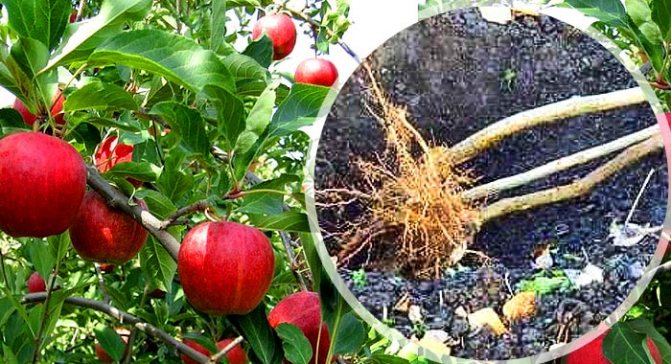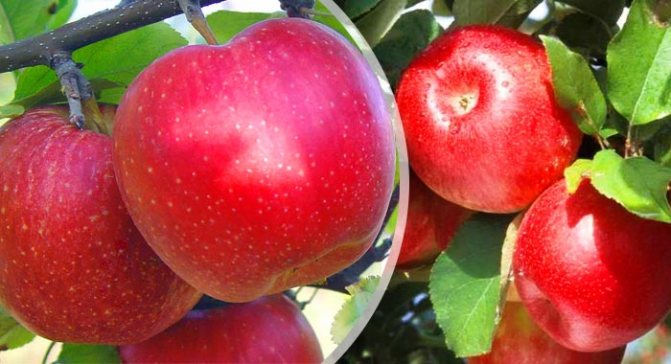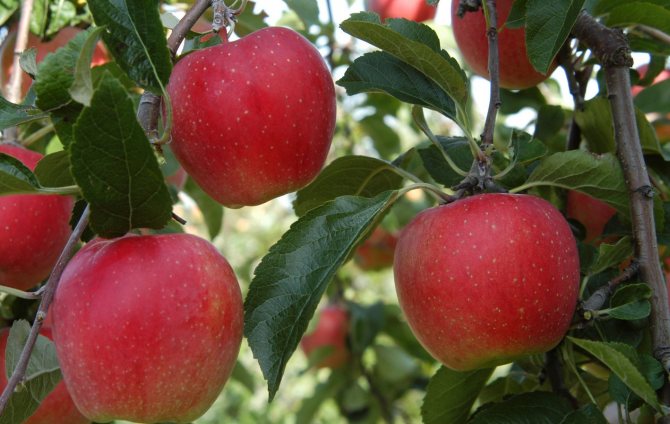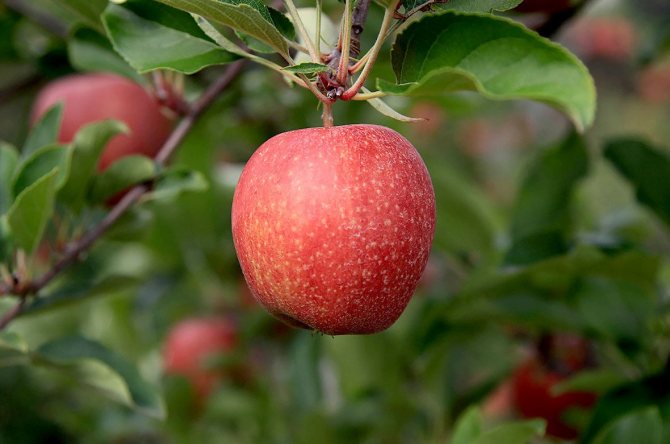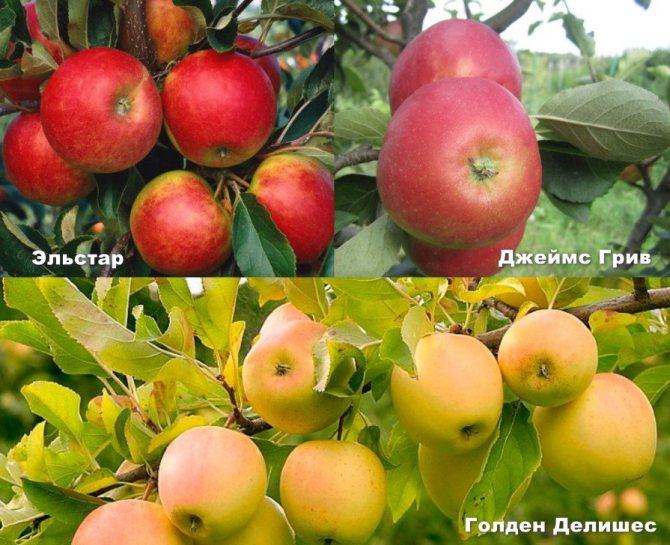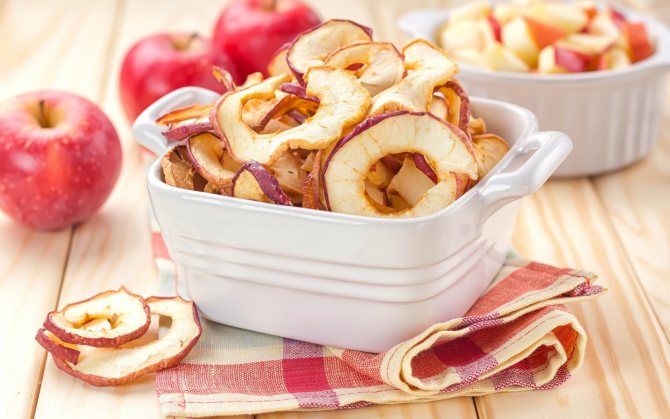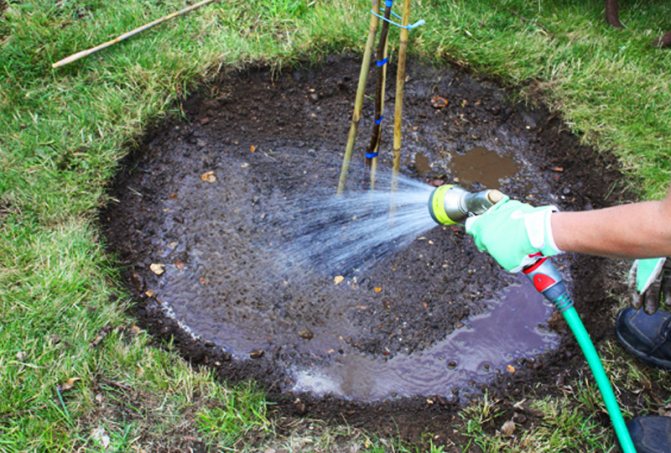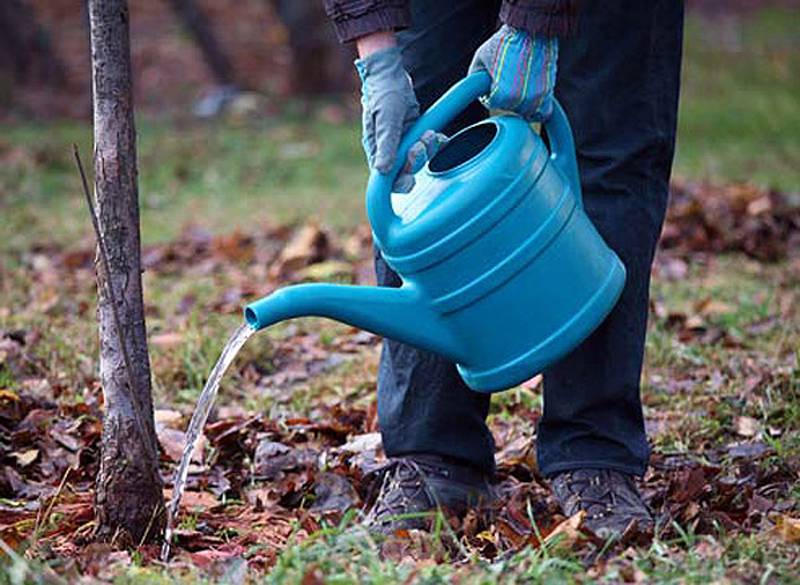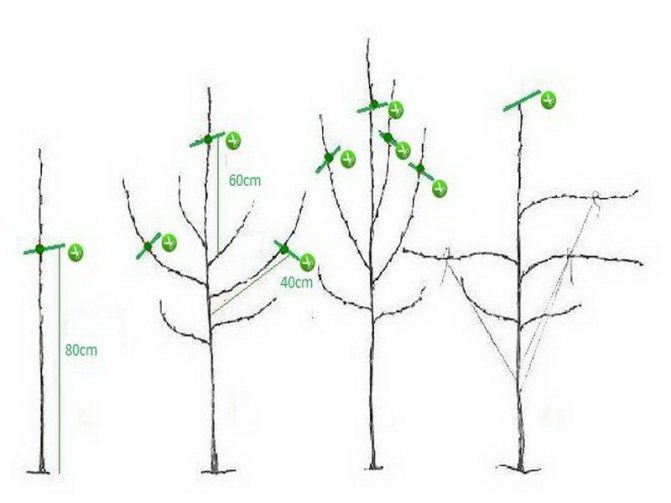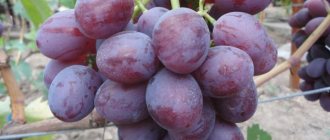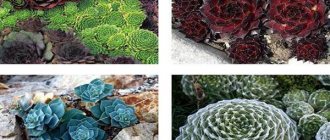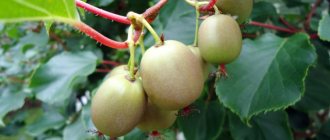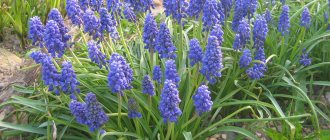»Gardening» Apple tree »Apples Gala - features of the variety
0
90
Article rating
In our country and abroad, Gala apples are among the three most popular varieties. Although the fruit was bred in New Zealand, it is most widespread in the United States, Latin America and Europe. Presentable appearance, pleasant sweetness, outstanding crunchiness and juiciness have earned fame for these fruits.

Gala apples - variety features
Growing in regions
The Gala apple tree is moderately frost-resistant.
In central Russia, just the average resistance to frost makes it possible to grow Gala varieties.
But look at the proposals of garden nurseries of the Moscow region and the Leningrad region. This means that gardeners are growing. Apples are delicious.
In Ukraine. Since the seventies, it has been zoned throughout Ukraine (or rather since 1993) in the steppe zone. And rightfully so.
In the Krasnodar Territory, the variety is zoned. They not only grow it, but also create their own clones (Gala cube).
The rules for growing the Gala apple tree and caring for it do not have significant differences and features in comparison with other varieties. Let's briefly show the main points.
Watering and feeding
There is no information in the sources about the drought resistance of the variety. Therefore, we will assume that the watering requirements for this apple tree are average. As usual, the tree requires more frequent watering in the first years of life, while the root system is still underdeveloped. At this time, the tree needs eight to ten waterings per season.
With age, as a rule, the need for them decreases and, depending on weather conditions, they will need 4-6 during the growing season. It is most important to moisturize the soil in the spring and first half of the summer. Watering is usually stopped 2-3 weeks before harvesting. In the fall, pre-winter moisture-charging irrigation will be required. Mulching the soil in the tree circles will help maintain proper moisture and prevent weed growth.
Regular fertilization promotes stable fruiting and high quality fruit. They start feeding the apple tree 3-4 years after planting, when the supply of nutrients in the planting pit begins to dry up.
The most suitable for growing Gala apple trees are the Central regions and the Volga region. Winters in these latitudes are not so frosty. The Krasnodar Territory is also suitable for cultivation, because it was for this region that the variety was zoned. In addition, most of the hybrid clones were created in the Krasnodar Territory. In northern latitudes, cultivation is problematic due to the fact that the trees are not frost-resistant, and some of them die in winter.
Gala plants abhor the abundance of water. Watering of young apple trees for the first three years is carried out weekly, if the weather is not rainy. Adult fruiting apple trees need irrigation only during drought periods, if the land is very dry.
Fruiting apple trees for more successful productivity, it is desirable to normalize. Then it will be possible to remove large one-dimensional apples. Excess ovaries are removed in spring, they need to be left so much so that the apple tree does not deplete and break off. If the work of opening the ovaries is neglected, on an overloaded fruit tree, flower buds will be formed in fewer numbers by the next season.By the next summer, the apple tree will give little fruit, this year will be a rest for the plant.
The Gala tree must also be pruned. The first is produced in the spring of the year following planting, before the buds have blossomed. The central shoot is carefully separated, its top is cut off, the branches are also shortened so that new shoots can actively grow. Every year, with the onset of spring days, last year's increments are cut off by one third of the entire length of the branch. In addition to the fact that the crown acquires an aesthetically beautiful and well-groomed appearance, the annual apple harvest is normalized.
For Gala trees, the prevention of plant diseases will be a must. In early spring, when the snow is still lying, the trunk and large skeletal branches located in the lower tier are whitewashed.
The apple tree can be affected by pest infestations. Weevils eat out flowers, from which you can partially or completely lose the crop. Fighting early, before the females start laying eggs, will have a quick effect and the flowers can be preserved. You can use the folk method by laying a piece of cloth under the trunk of the apple tree, shaking the tree strongly, the fallen beetles are destroyed. An effective remedy for treating apple plants is the Calypso chemical, which is good because it does not harm bees.
Fruit moths are distinguished by the spoilage of apples, getting inside the fruit. In springtime, pests are caught using burlap soaked in whey. Also, in late spring and early summer, wormwood is collected, or the grass is available in dry form (harvesting from last summer), an infusion is prepared from it. Harmful insects are very afraid of the smell of bitter grass.
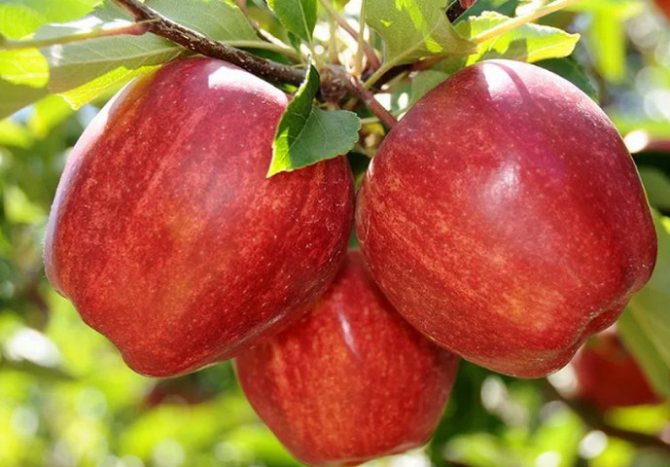

Leafworms eat foliage, harm the kidneys. Apple leaves are sprayed with Lufox. You can prepare an infusion by collecting tomato tops and wormwood. Proper and timely fertilization will be an important part of Gala care. Until the buds appear on the apple tree, nitrogen fertilization will be required. When budding is in full swing, complex supplements will be required in the form of mixtures containing potassium, phosphorus and trace elements.
When the apple harvest is harvested, you will need phosphorus and potash fertilizers, as well as special mixtures that are prepared in industry specifically for the fruit tree, and the packaging should indicate that the funds are for autumn use.
Disease prevention
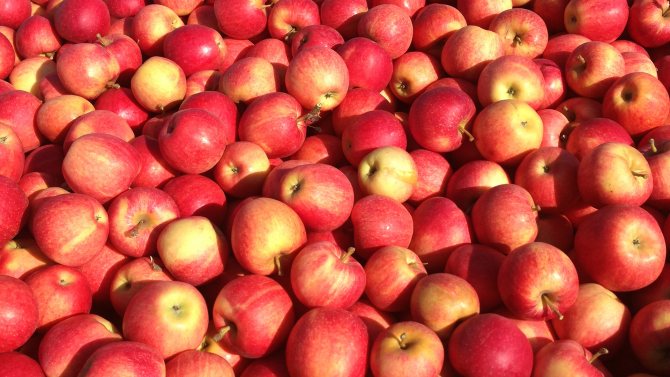

Apple trees are susceptible to powdery mildew, European cancer, scab, moniliosis. For the prevention of diseases, plants should be sprayed with fungicidal agents. Also, this measure will help to destroy pests that may periodically appear on fruit trees.
To prevent the development of diseases, trees should be treated with a solution of quicklime or chalk. Copper sulfate or Bordeaux liquid can be used to process the crown. Such processing is carried out 2-3 weeks before the onset of the flowering period. Lime can be used to process the upper layers of the soil in the near-trunk circle, and digging the earth in the autumn will also help to deal with pests.
Description of the olive tree, where it grows, the benefits of the fruit
Breeding history
Gala was developed by New Zealand breeders in the late 1950s. To create a new fruit crop, the variety Kids Orange and the Golden Delicious apple tree were used. In the early 70s of the last century, a new variety of fruit crops began to be cultivated all over the world. And today, Gala apples occupy an honorable second place among the most demanded fruits.
The apple variety that is extremely popular with consumers around the world is Gala. Trees of this variety are planted in large areas in Europe, Canada, Brazil and America. In the 70s, the Gala apple tree was tested in experimental plantations in Ukraine.In Russia, the southern regions have the most suitable conditions for growing the variety.


Gala apples are popular in the consumer market
The apple tree comes from places far from us - New Zealand. The cultivar is the result of a cross between Kidds Orange Red and the very popular Golden Delicious. The novelty quickly took one of the leading positions in the apple market - it is the second most produced variety in the world after Fuji.
The Gala variety is characterized by medium-sized trees with an oval and wide, not too thick crown. Skeletal branches growing at an angle of 45 and 750 are not strong. Fruiting of a mixed type, fruits can be tied at the tops of annual growths, fruit twigs and ringlets. The tree blooms in mid-late periods, which saves the gardener from worries about damage to flowers due to possible return frosts.
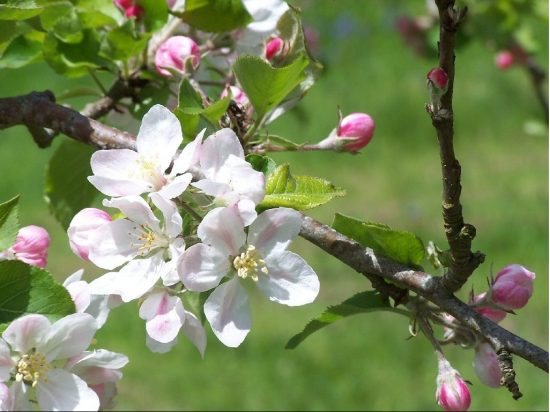

The Gala apple tree blooms at a later date, so she is not afraid of return frosts
The Gala variety is distinguished by rather one-dimensional fruits of a beautiful round or round-cut-conical shape. Weak ribbing sometimes appears on the top of the apple. The fruits have an average size and weight of 115 - 145 g, but not more than 170 g. The skin is shiny, thin, soft, but has sufficient density.
Gala in translation means "festive", but it is true that the fruits of this apple tree are very attractive in appearance. The main color is yellow or greenish-yellow. The covering shade is red-orange and is presented in the form of blurred stripes located over the entire surface of the skin. Sometimes the red blush almost completely covers the fruit.
Those who have tasted Gala apples will not forget this taste and will not be confused with any other. The fruits are very juicy and crunchy, they taste sweet, but not sugary, with a slight sourness. The aroma is very pleasant, reminiscent of caramel with nuts. The structure of the light yellow pulp is firm, slightly granular. The cut apple does not darken for a long time.


Those who have tasted Gala apples will never forget this wonderful taste.
For the first time the Gala variety was bred in 1957 in New Zealand, but very soon it spread to Brazil, Canada, and the USA.
The variety greatly attracted the attention of gardeners, but among people it was unpopular due to its initially unattractive appearance and small size.
At the same time, further improvements to the apple tree began, as a result of which it was possible to obtain many clones, which acquired a more presentable appearance and better commercial qualities.
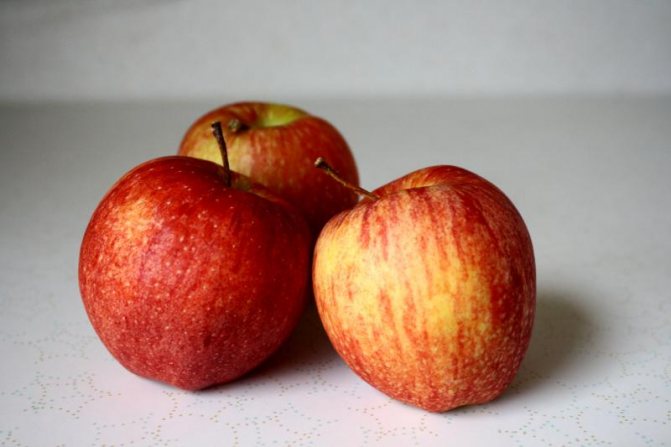

The most famous varieties of varieties are Gala Mast, Gala Shniga, Gala Delicious, Gala Royal, Gala Brookfield, Gala Jazz, Gala Delfoga, Gala Mondial, etc.
The homeland of the apples of this variety is New Zealand, from where it spread relatively quickly throughout the world. She (New Zealand) was the only producer for a short time.
The variety was bred, according to one opinion, in 1957, on the other, a little later, in 1962. Gala apples owe their appearance to breeder J. Kidd. Gala means celebration or celebration.


Apple Gala
Varieties of varieties
The Gala apple tree was taken as a basis for breeding new hybrid varieties of fruit crops.
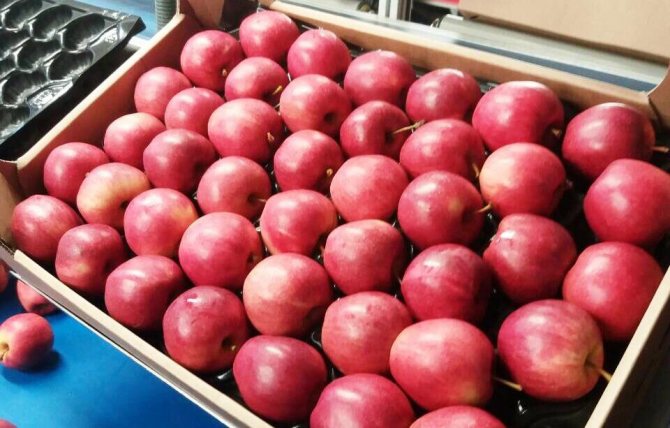

Gala Brookfield
A variety of the Brookfield cultivar, it quickly gained popularity among gardeners and farmers. Large fruits with crunchy, sweet flesh and red-violet blush are in demand all over the world. Apples ripen in September. Brookfield apple trees are poorly protected from scab and bacterial cancer.
Delicious
A distinctive feature of this variety of fruit trees is its unpretentiousness to soils and climatic conditions. Fruit ripening occurs in September. Apples are large, bright, red in color with juicy, sweet and sour pulp
Galaxy
Gala apple clone from New Zealand. The tree blooms in late spring, many ovaries are formed, control is needed.The fruits are large, with aromatic and tasty caramel pulp. The skin is thin, dense, with a dark red blush. The tree begins to bear fruit already for 2-3 years of growth.
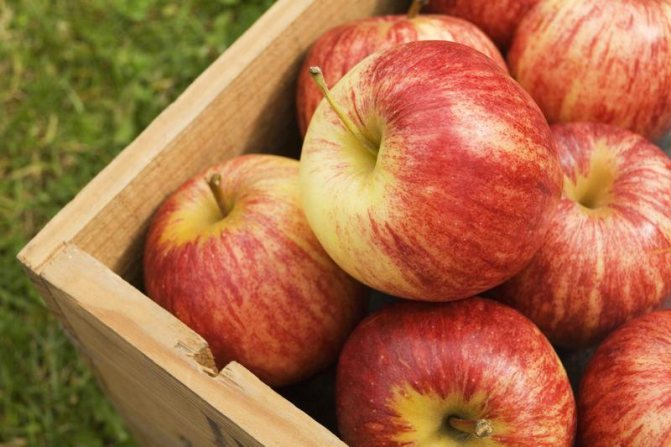

Royal
The Royal variety is actively grown by gardeners and farmers around the world in industrial volumes. Ripe fruits are slightly elongated and have a bright skin color and sweet, juicy pulp.
Ed
The varietal variety Red is distinguished by early flowering. Fruit ripens in the second half of August. Fruits are medium in size, cone-shaped with a bright, dark red blush and sweet, yellow flesh.
Natalie
A distinctive feature of the variety is the early blush, which occurs in unripe apples. Due to this peculiarity, harvesting often occurs earlier than the fruit has time to ripen.


Cube
The Gala apple clone was bred in the Krasnodar Territory. Since 2007, it has been actively planted in the gardens of the Caucasus region. Fruit ripening occurs at the end of summer. Fruits are medium in size, with a dense yellow-orange peel. The pulp of apples is juicy, sweet with a slight creamy shade.
Costa
The Costa variety practically does not differ from the Gala Mast apples, with the exception of the size of the ripened fruits. In Costa, they are smaller, but this does not affect the taste.
Mondial
The variety was bred in New Zealand. Mondial apples ripen in August. Fruit of an elongated shape with a juicy pulp and a bright, pink blush on the skin.
Mast
Gala variety Mast, this is the most successful clone of the apple tree. The main difference between the variety is its natural immunity to powdery mildew and large, red fruits.
Features of ripening and fruiting
The beginning of fruiting
- 5-6th year, or even 7th on a tall seedling stock.
- 3-4 years on the dwarf.
Flowering period
Does not bloom early. Flowering is considered medium and even medium late. But how it blooms! Blooms profusely. There are a lot of ovaries - do thinning - leave 1-2 from 2-3.
Gala blooms profusely.
Fruits ripen in September. A dry, warm day is chosen for harvesting. The apples are carefully separated from the branches and placed in a prepared container. If the fruit is sent for long-term storage, then any damage to the peel, manifestations of diseases and rot are excluded.
In terms of fruiting, the Gala tree belongs to the mixed type. Apple ovaries can be formed on annual growths, ringlets and twigs. The grown large and medium-sized Gala fruits have a beautiful shape, the apples are usually conical, less often rounded. One fruit, on average, weighs 130 grams. The largest apples reach 170 g. One piece.
The thin peel of Gala fruits cannot be called rough, but although it is current, it is dense. The main shade of apples is yellow or yellowish green. But on top of it, ripe fruits develop a dark red blush all over the fruit. Juicy, dense and crunchy flesh of the Gala fruit is yellow, the taste is both sour and sweet. Gala received a high, about 4, 6 points, tasting marks.
Productivity is precisely the factor that makes the apple tree popular in production. Mature trees bring about 55 - 70 kg of harvest annually.


The apple tree bears fruit in mid-September, the ripening period for different mutants of the Gala variety varies within a few months.
Variety descriptions
Like every fruit crop, Gala apple trees have both advantages and disadvantages.
Advantages:
- High yield of the variety.
- Fruiting occurs annually, without interruption.
- According to experts, the fruit has a high taste.
- Natural immunity to some diseases and pests.
- A thick stalk that prevents ripe fruits from falling off.
- Duration of storage and the possibility of long-distance transportation of the harvested crop.
Disadvantages:
- Fruit trees are poorly protected from monoliosis and moths.
- With prolonged frosts, apple trees freeze out.
- The age of the fruit crop affects the quality of the fruit and the yield.
Important! The fruits of the Gala apple tree are low in calories, therefore they are used in dietary regimes.


Growing area
Gala apples are grown commercially in the USA, Brazil, Canada, in all European countries, Russia and Ukraine. Trees are comfortable on fertile soils of subtropical and temperate climates. In the conditions of long, cold winters, plants quickly freeze and die.
Tree height and crown size
Adult apple trees grow up to a maximum of 5 m in height. Crohn, wide, spreading, flattened, oval in shape and many unevenly spaced bends directed upward at an acute angle.
Pollinator varieties
Gala apple trees are capable of partial self-pollination. But for higher yields, trees need the right pollinator neighbors. Near the Gala trees, apple varieties are planted with similar flowering times. The best neighbors for pollination of Galla are Red Delicious, Idared and Elstar varieties.
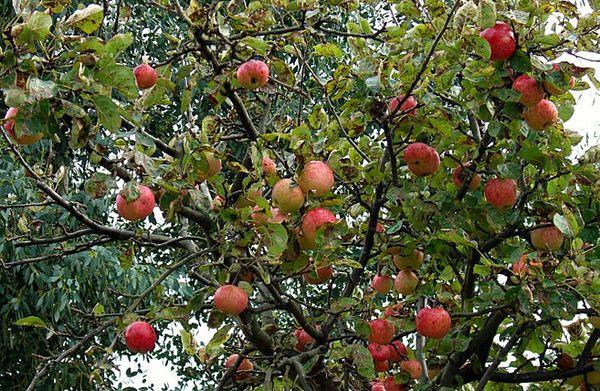

Foliage, flowering and fruiting
The leaf plates are elongated, with a pointed tip, rich green shades. The lower part of the foliage is fleecy. The trees begin to bloom in late spring. Large inflorescences bloom with white flowers. Ovaries are formed both on old branches and on new growths.
The Gala apple tree begins to bear fruit at 5-6 years of growth. Exceptions are trees grafted onto dwarf rootstocks. In this case, the fruiting of the culture begins 2-3 years earlier.
Important! The tree bears fruit every year, but the number of ovaries and young shoots must be controlled. Otherwise, the yield will decrease annually, and the fruits will become smaller.


Productivity and annual growth
The main advantage of the variety is its large and high-quality harvests. From an adult tree, 60 to 90 kg of delicious, ripe fruits are harvested. That is why apple trees of this variety are grown on an industrial scale. Every year, a lot of young shoots appear at the tree, which are capable of bearing fruit the next year.
Each spring, young shoots are pruned by 1/3, which makes it possible to prevent oversaturation of the crown and excess fruit on the tree.
Tasting evaluation and scope of fruit application
According to experts, Gala apples have a high taste and are ranked among the dessert fruit varieties. Ripe fruits are uniform, round in shape with a thin but firm skin of yellow or green color. A distinctive feature of the variety is a bright, red blush, evenly located on the surface of the apple peel.
See also
Description and subtleties of growing an apple tree of the Spartak variety
To read
The pulp is dense, crispy, yellowish, sweet, with a slight sour taste. Ripe fruits are recommended for consumption, both raw and for processing. On an industrial scale, Gala apples are the main product for the manufacture of baby food.


Disease and pest resistance
The fruit crop has immunity to many diseases and pests. But for the prevention of scab and bacterial cancer, spring preventive treatments are necessary.
Resistant to low temperatures and drought
Gala trees easily tolerate temperate winters down to -30 degrees, provided that severe frosts are not resistant and last 1-2 days. In the northern regions, apple trees freeze and die. Apple trees tolerate high temperatures and drought. Trees do not like excessive soil moisture.
Tree lifespan
Apple trees are long-lived trees. Depending on the conditions of growth and care, the main fruiting period of a culture ranges from 25 to 50 years.


Growing in different regions
The Gala variety has an average frost resistance, therefore, in areas where there are severe frosts, it is better not to plant it.The risk that the tree will not survive the winter is too high.
So where do Gala apple trees grow?
The apple tree was originally bred in New Zealand, where winter temperatures are almost never sub-zero.
It is dominated by tropical and subtropical forests.
In the future, the variety was improved, winter hardiness and general endurance of the tree increased.
The optimal zones for the Gala variety at the moment are steppes and forest-steppe. But this is only in theory, in fact, the apple tree will feel good in any region where there are no severe winters and strong swamps.
Gardeners reviews
This is a very good variety. It bears fruit every year, the harvest is large. Apple trees are easy to care for. The apples are juicy, fragrant, beautiful to look at. We use them to prepare compote and dried fruits.
Elena
Apples have a pleasant taste, strong aroma. Fruits are large, persist on branches for a long time. Apple trees are unpretentious. The harvest from two apple trees is enough for fresh consumption and for harvesting. I recommend this variety to all summer residents.
Igor
Currently, I am selecting seedlings for planting on the site. Recommended variety Gala., Which is resistant to frost, undemanding to care for and has a rich harvest.
Andrew
Harvesting and storage
If Gala apples fall, the peel, due to its high density, is almost never damaged. And long-term transportation, fruits are easily tolerated. If a cellar or cellar is used for storage, the keeping quality of Gala fruits is approximately 3 months. Excellent and special conditions allow apples not to spoil even up to 6 months.
Gala fruits are consumed raw, they are also used to prepare various culinary delights, make preparations, apples are used on an industrial scale for the production of juices and baby food. Fruiting of apple trees is possible 4 years after planting. On a dwarf rootstock after 3 years. Gala fruits are harvested in autumn, from September, ending in November.
At the end of September, the harvest of Gala apples begins. There is no need to rush with boron - ripe apples stick well to the branch and do not fall.
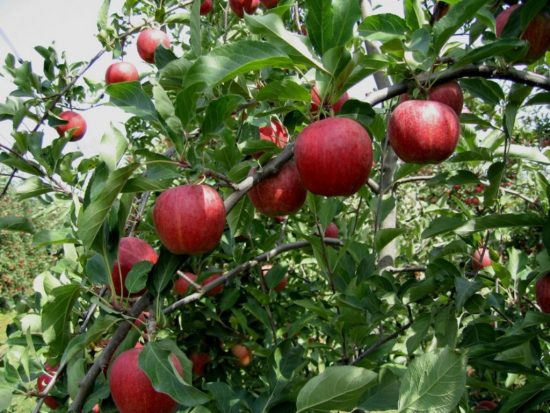

The fruits of the Gala apple tree are able not to crumble for a long time
Harvesting is done in dry weather. The fruits are removed from the tree very carefully and sorted immediately. Apples intended for storage must be intact, without the slightest damage to the skin and signs of disease. Broken or damaged fruits are sent for processing.
Apples are stored in wooden or plastic boxes, stacked in 3 - 4 layers. The storage room must be dry, free from mold and odors. At 50C, apples can be stored for up to 3 months. In the refrigerator, the shelf life is almost doubled.
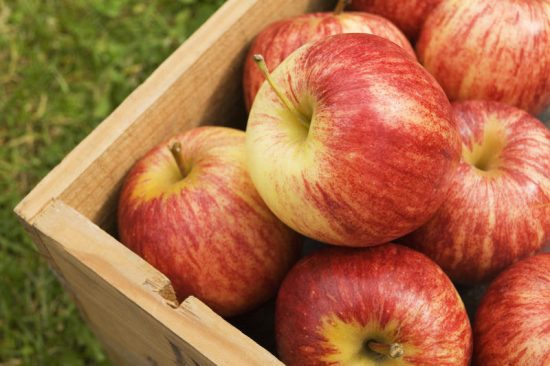

Gala apples have good keeping quality
Landing
Seedlings are planted in a hole measuring 50x50x50 - 80x80x80 cm (depth and width depend on the stock) in early spring (until the end of April) or in autumn one month before frost. Preliminarily, organic matter (compost, 3-year-old rotted manure, purchased soil mixture) or complex fertilizer (according to the instructions) is placed on the bottom.
It is better to use properly prepared compost: it does not "burn" the roots with ammonia (unlike fresh manure) and is not washed off by spring floods (unlike fertilizers).
When planting, the roots are buried in such a way as not to cover the root collar. It is advisable to orient the scion stump to the sunny side. After filling and tamping the earth, the hole must be well watered.
Tree care
In order for the tree to bear a good harvest, and the fruits to have a pleasant taste, the Gala apple tree should be properly cared for. In order for the variety to develop well, it is necessary to thin out the ovaries and reduce the density of the inflorescences.
Watering the variety should be moderate. After planting is carried out, it should be watered once a week.Moisture is gradually reduced and produced only in case of severe drought.
For the prevention of pests, lime is used. The upper layers of the soil are also disinfected. For prophylaxis, bleach is used, and they also dig the earth around.
The most common pests of this tree are apple blossom beetles. To get rid of them, you should treat the culture with a special preparation. For the prevention and control of diseases, you need to spray the tree with a solution of urea.
Pruning is often done in the spring. During this period, branches are removed that grow inward, as well as broken and cracked ones. Pruning in the fall means getting rid of dry, broken branches. Then the earth is dug up and mulched and the trunk is whitewashed to protect it from pests.

